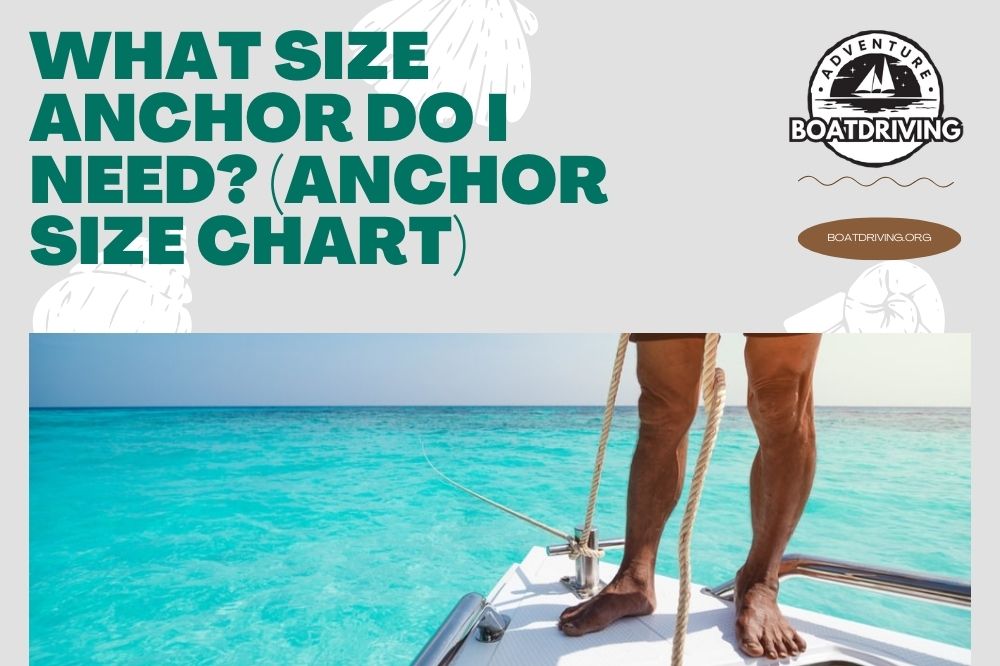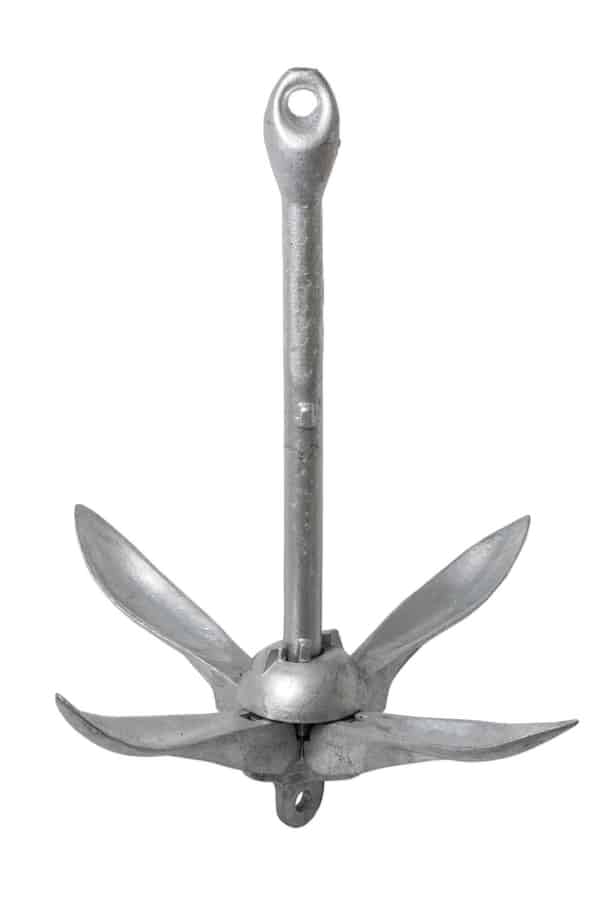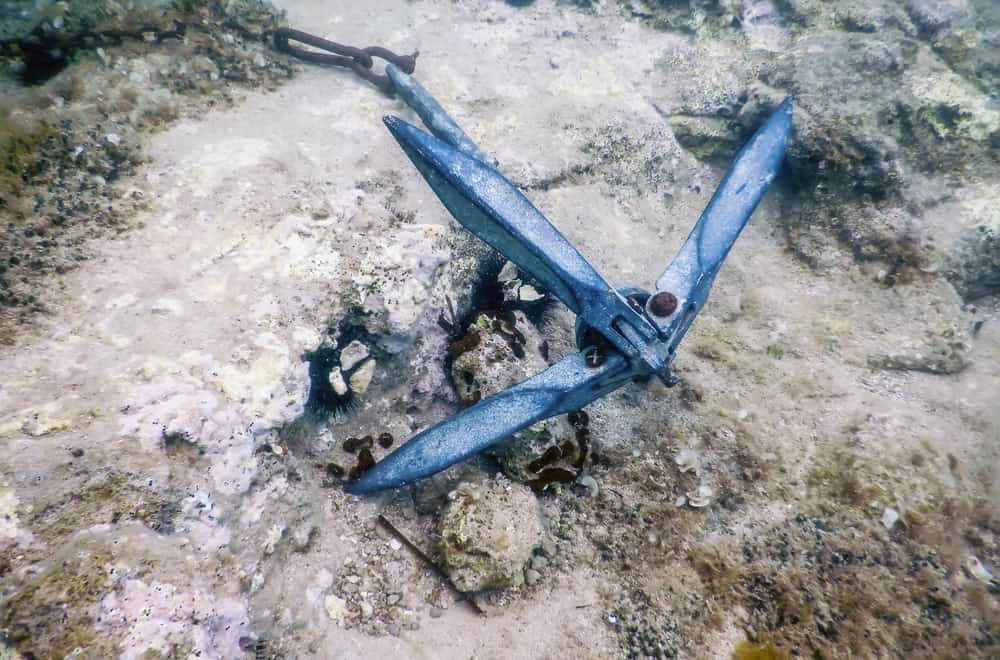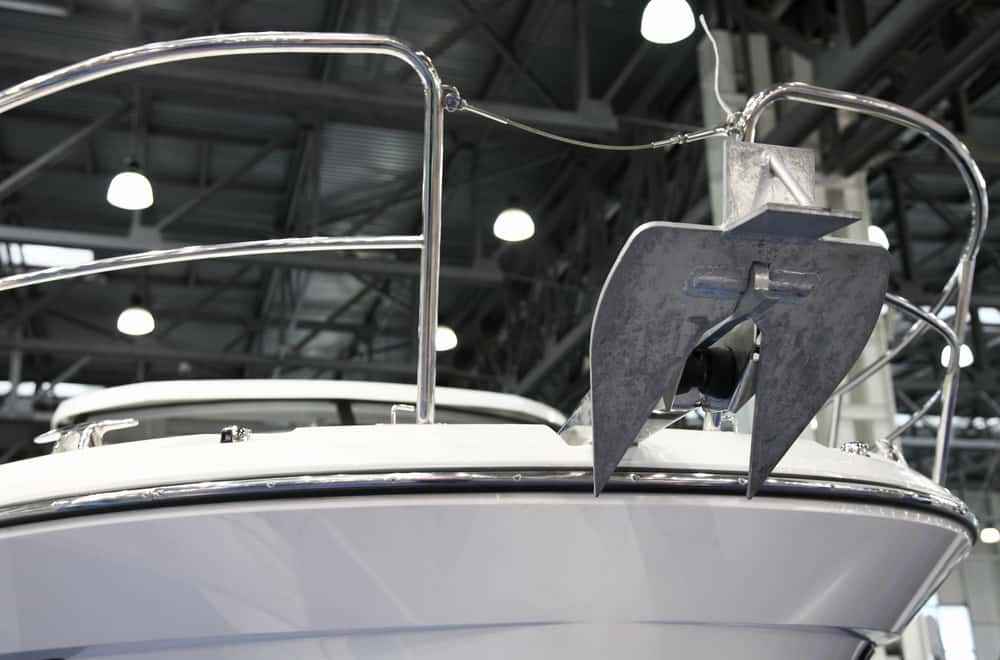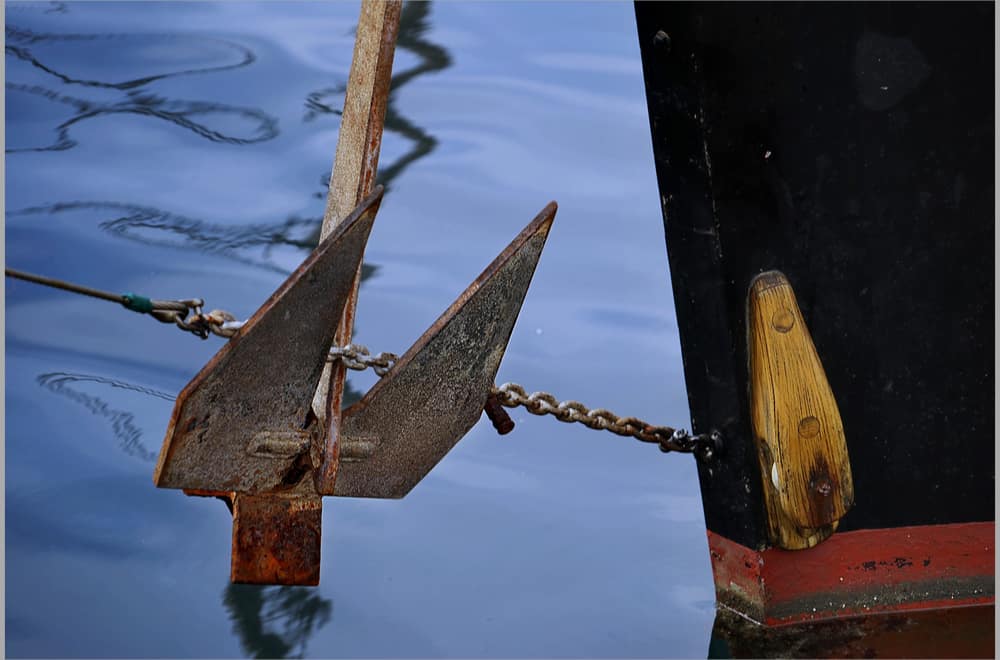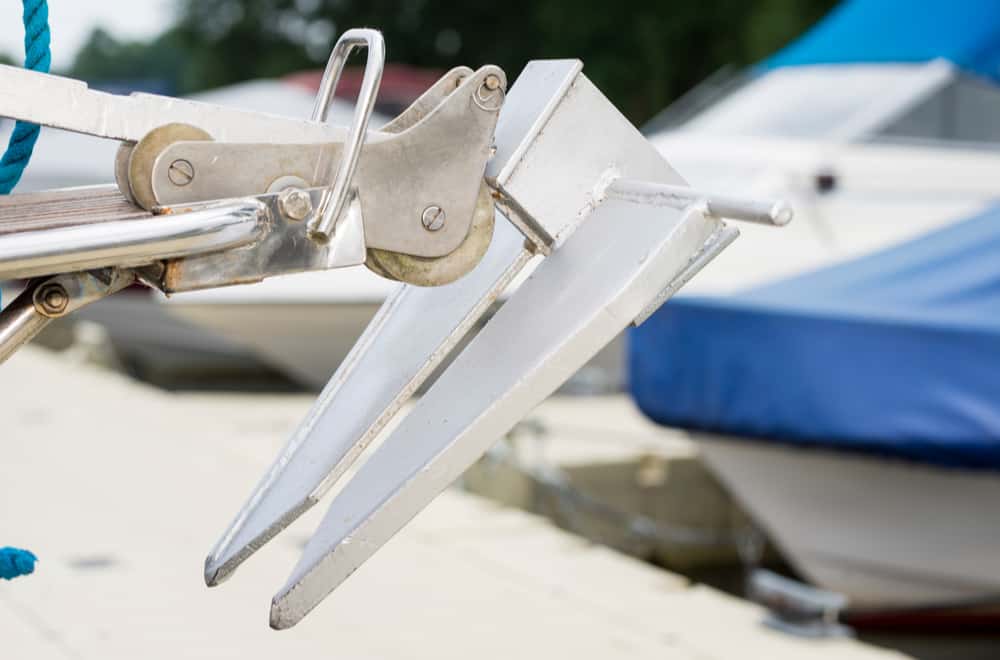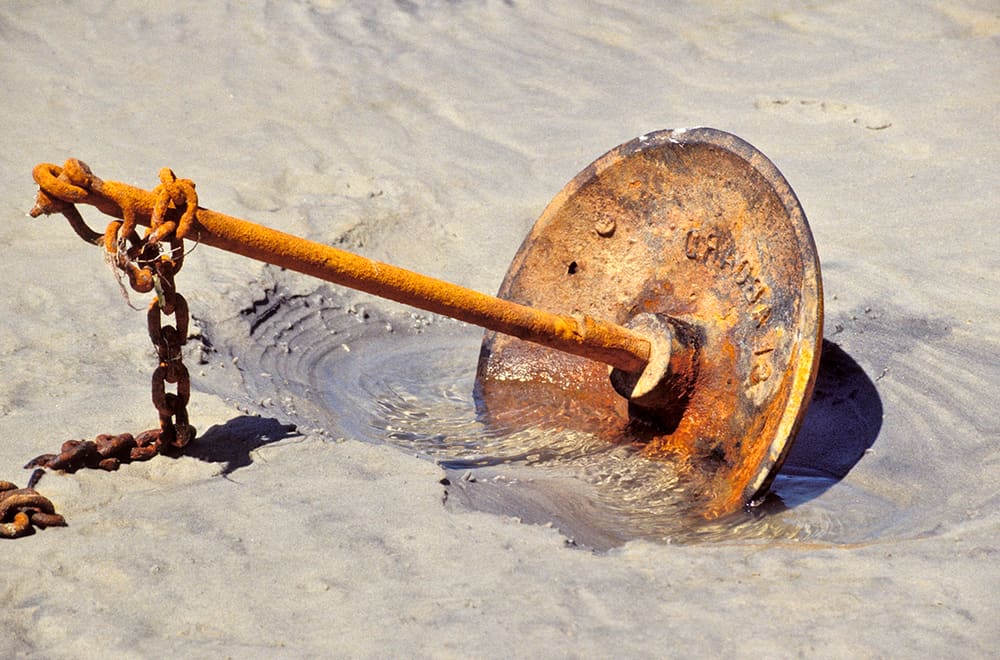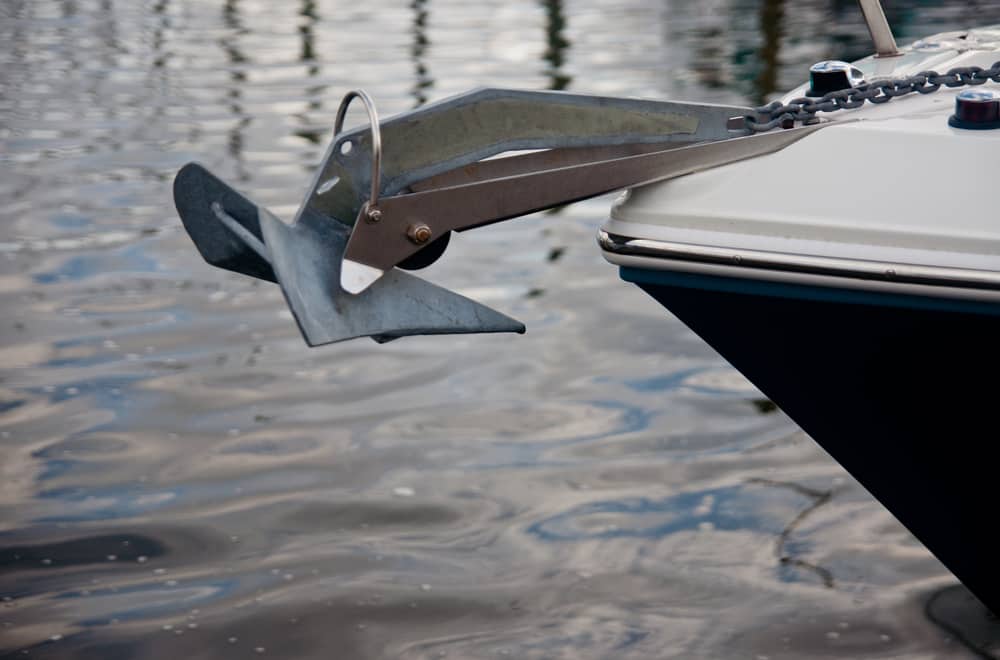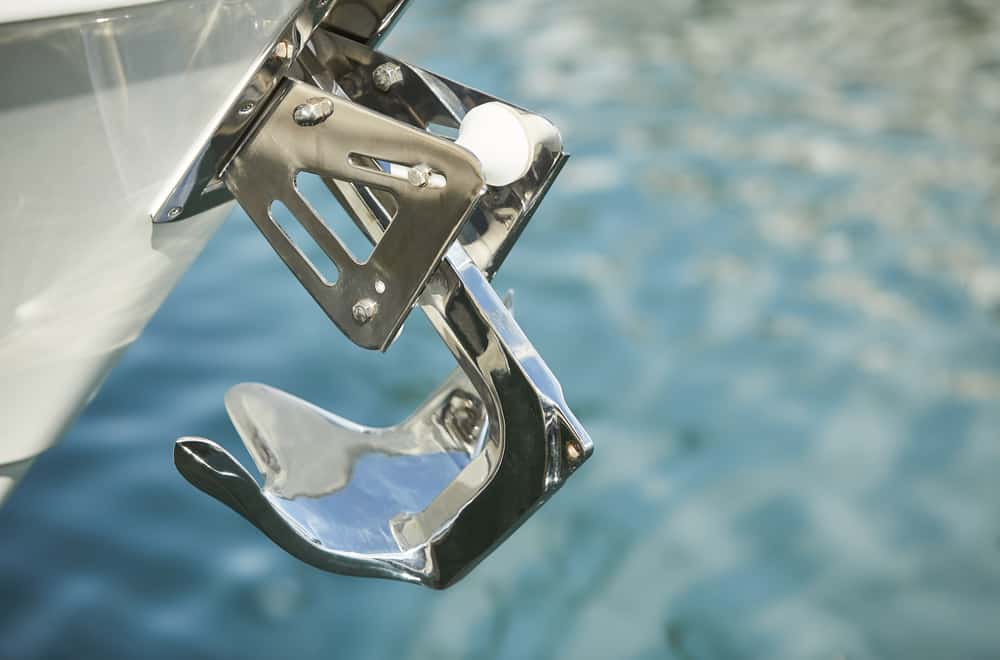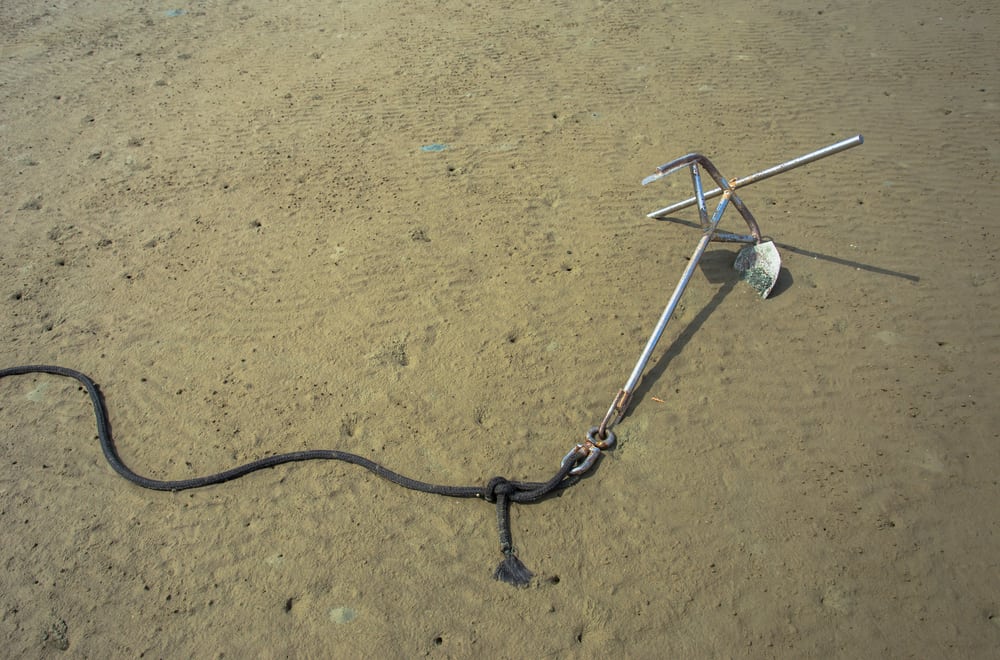When it comes to boat safety items, an anchor is non-negotiable. Your anchor size roughly depends upon your boat size, type, wind speed, anchor type, and anchoring conditions you encounter.
To be precise, pinpointing the exact anchor size for your boat can be difficult. Nevertheless, it is always a good idea to follow the rough guidelines provided by your anchor manufacturer.
For your convenience, we’ve compiled all the information you need to figure out the right size of anchor for your boat in this post. Let’s begin!
Table of Contents
What Factors to Consider Before Buying a Boat Anchor?
1. Holding power
The holding power of an anchor is the pull force it must withstand in order to hold the boat of a given weight in place.
Holding capacity depends upon the ability of the anchor to dig, the soil measurements, and the shape of the anchor. Holding power also varies with environmental factors such as wind speed.
2. Anchor weight:
Besides holding power, the anchor weight is also a primary factor you should consider. The anchor must be heavy enough to be able to drag through the bottom so that your vessel stays put in a single place.
In fact, many suggest always taking two anchors on board with you at all times, especially if you anchor your boat overnight; one, a simple hook style anchor for calm water and weather conditions, and a heavy one that assures your boat safety even during stormy and turbulent conditions.
Nevertheless, many new generation anchors today rely on the design that offers the best holding power and not really on the weight of the anchor.
3. Type of seabed:
Some types of anchors are efficient for sandy or muddy seabed, while others might be the best in the case of rough and rocky bottoms.
Almost all types of anchors have impressive holding power in hard sand bottoms. However, in mud bottoms, anchors need to penetrate high in order to reach the bottom material.
Likewise, weed bottoms are truly challenging to penetrate for anchors. Therefore, the anchor weight plays a critical role in such a seabed type.
Overall, you must be aware of the seabed types that you’ll encounter along your voyage to be able to choose the right design and sized anchor for your vessel.
Types of Boat Anchors
1. Folding Grapnel:
Folding grapnels features multiple tines to grab structures and are great to anchor to an area with rough or rocky bottom. These anchors are great for small vessels, inflatables, and jet skis and are recommended by many as secondary or emergency anchors.
2. Reef Anchors:
As the name suggests, reef anchors are great for coral reefs and rocky bottoms. Many boaters choose to hand-weld and DIY reef anchors.
3. Plough anchors:
Plough anchors have a single penetrating point attached to the central shank and are ideal for sandy, muddy, and weed bottoms. You might notice arched shank in modern plough anchor designs. As long as it gets a good grip, this anchor type is also great for rocky bottom uses.
On the other hand, plough anchors might not be the ideal anchor for loose bottoms, as it only gets dragged along the boat without any resistance.
4. Claw anchors:
Claw anchors have a broader scoop shape than plough anchors and are suitable for anchoring in a variety of sea beds. It is ideal for sandy and muddy sea bottom but also performs decent enough in rocky bottoms. Nevertheless, it isn’t a great anchor candidate when it comes to loose sand bottoms.
5. Fluke or Danforth anchors:
Fluke anchors feature two triangular-shaped flukes attached to the central shank to bury onto the sea bed. Due to its simple design and lightweight character, it is undoubtedly a great choice for small crafts.
The small gap in between the flukes in the Danforth anchor allows better grip onto the rough sea bed. Although the orientation of the flukes is changeable depending upon the seabed material, the ideal angle for maximum efficiency is 30 degrees.
6. Mushroom anchors:
Another great anchor for small vessels and dinghies is the mushroom anchor. Small mushroom anchors are ideal if you often anchor your boat to a river bottom. On the other hand, large mushroom anchors are used for mooring purposes.
7. Spade with roll bar anchors:
Distributed by brands such as Manson and ROCNA, a spade with roll bar anchors is designed to set fast onto any type of sea bed with impeccable holding power.
Anchor Size Chart
For your convenience, we’ve done all the research for you. Here are some common anchor types used in the US and the anchor weight recommended for them depending on the boat length.
Remember to take this list only for reference purposes and research for the accurate and updated recommended anchor size listed by your manufacturer. And, when in doubt or during stormy conditions, always go a size higher.
| Boat Length (ft.) | 13-25’ | 25-30’ | 30-35’ | 35-40’ | 40-45’ | 45-50’ | 50-60’ | 60-70’ | 70-80’ | 80-90’ | 90-100’ |
| Anchor Type | |||||||||||
| Spade (Galvanized and Stainless) | 12-21 lbs. | N/A | N/A | N/A | 33 lbs. | 44 lbs. | 44-55 lbs. | 66 lbs. | 77 lbs. | 121 lbs. | 165 lbs. |
| Spade (Aluminum) | 6-10 lbs. | N/A | 15 lbs. | N/A | N/A | N/A | 26 lbs | 41 lbs. | N/A | 57 lbs. | N/A |
| Fluke Danforth | 8 lbs. | 16 lbs. | 22 lbs. | 33 lbs. | 33-44 lbs. | 44 lbs. | N/A | N/A | N/A | N/A | N/A |
| Lewmar DTX | 14 lbs | 22 lbs. | 35 lbs. | 35 lbs. | 35-44 lbs. | 44 lbs. | 55-70 lbs. | 88 lbs. | 110 lbs. | 140 lbs. | N/A |
| Claw Bruce | 6-11 lbs. | 22 lbs. | 33 lbs. | 44 lbs. | 66 lbs. | 66 lbs. | 66 lbs. | N/A | N/A | N/A | N/A |
| Lewmar C.Q.R. | 15 lbs. | 20 lbs. | 25 lbs. | 35 lbs. | 35 lbs. | 44 lbs. | 60 lbs. | 75-105 lbs. | 140 lbs. | 180 lbs. | N/A |
| Rocna or Vulcan (50 Knots) | 9 lbs. | 13lbs. | 20 lbs. | 22-27 lbs. | N/A | 33 lbs. | 44-55 lbs. | 73 lbs. | 73-88 lbs. | 121 lbs. | 154 lbs. |
| Mantus | 8-13 lbs. | 17 lbs. | 25 lbs. | 25 lbs. | 45-55 lbs. | 65 lbs. | 85 lbs. | 105 lbs. | 125 lbs. | 155 lbs. | 175 lbs. |
Note: Unless specified otherwise, the chart assumes an average boat weight, average bottom conditions, and typical environmental conditions, including wind speed.
In the case of exceptionally long and heavy vessels, many brands such as Lewmar recommend the clients follow the relevant Classification Societies for instructions.
What Size Anchor Do I Need?
The standard calculation is 1 lb of anchor for each foot of the boat. Once you’re ready with this basal value, you can then adjust the anchor size by taking the instructions below to size up or down the anchor.
As per the rope, use three-strand nylon, and the minimum scope for your anchor must be 5:1. The scope value should be around 7:1 in case of heavy vessels.
The boat anchor scope is the ratio of the deployed anchor rode length to the depth of the water from the deck height to the bottom of the water body.
Likewise, the 6 ft chain for every 25 ft of water depth rule is also the golden standard. Moreover, anchors require at least one ft of chain every one ft of boat length for maximum efficiency.
Up your boat anchor size, regardless of the manufacturer’s recommendation, if you relate to any of the following scenarios.
- Your anchor rode is relatively lightweight.
- Your boat is relatively heavier than other boats with similar dimensions.
- Your boat is usually anchored in an area where weather change is unpredictable and quick.
- Your boat is big and wide relatively.
- The anchored area has a lot of windage.
- You’re planning an offshore sea voyage.
On the other hand, when it comes to sizing down your anchor size, the typical suggestion is that you don’t do it unless and until you check these conditions.
- You’re well aware of what type of seabed you will be anchoring your boat in.
- You never anchor your boat for a long duration or overnight.
- The wind speed of your sailing area never exceeds 10 knots.
- Your anchor rode is too big and heavy for your lightweight boat.
What Are Some Common Anchoring Mistakes?
Now that we all know how to choose the right boat anchor size for your boat let’s have a brief look at a few common mistakes sailors repeatedly make while anchoring their boat.
- Losing anchor in a trip is definitely not a new piece of news to experienced sailors. Many forget to secure the anchor line to the boat and simply throw the anchor into the water body.
Given this, many experts recommend sailors at least own two anchors on board with them during their journey.
- The anchor line can be messy to deal with, given how long they are. Often, sailors or the person on the foredeck make the mistake of letting the anchor go with their foot wrapped in the rope. That’s a pretty risky scenario.
Summary
Remember that when it comes to boat anchors, the bigger, the better unless the weight of the anchor is too heavy for your boat or it is too difficult to retrieve manually.
Also, for multihulls, many brands, including Spade and Rocna, suggest the buyers to up the size than recommended in the guide.
We hope you could form a clear idea on your head regarding the sizing of the boat anchor you require after reading this post. Let us know in case of any more queries!
